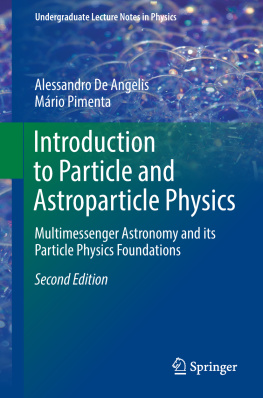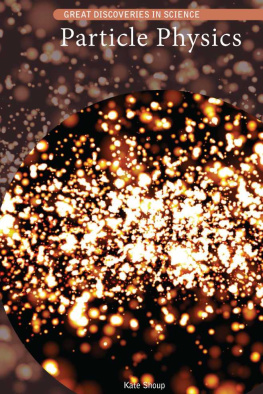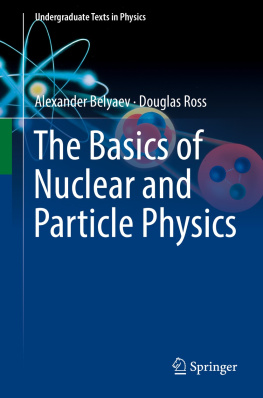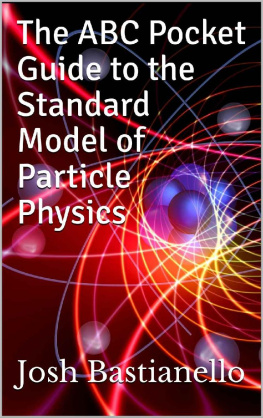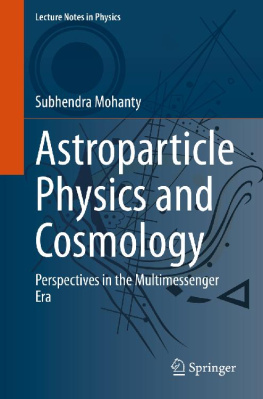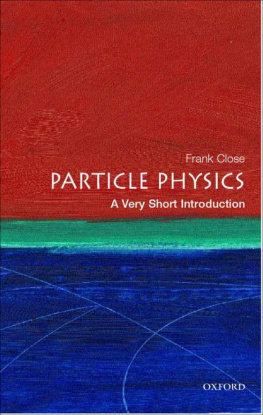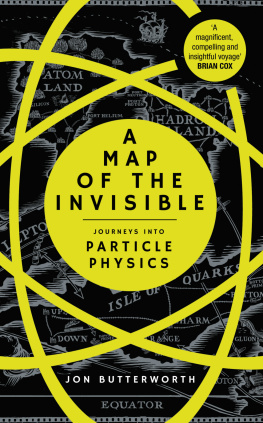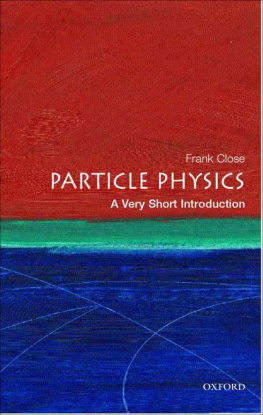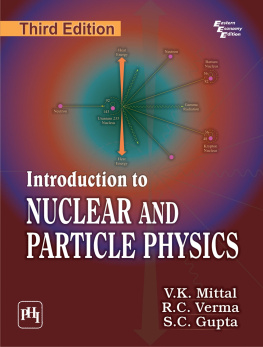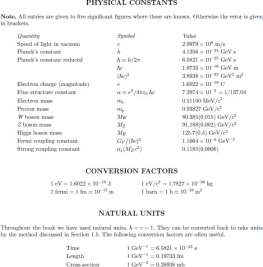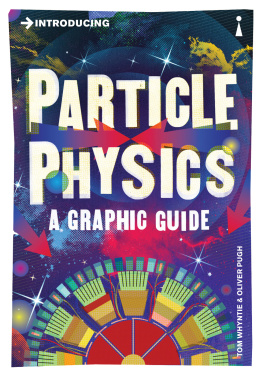Alessandro De Angelis - Introduction to Particle and Astroparticle Physics
Here you can read online Alessandro De Angelis - Introduction to Particle and Astroparticle Physics full text of the book (entire story) in english for free. Download pdf and epub, get meaning, cover and reviews about this ebook. year: 0, publisher: Springer International Publishing, genre: Children. Description of the work, (preface) as well as reviews are available. Best literature library LitArk.com created for fans of good reading and offers a wide selection of genres:
Romance novel
Science fiction
Adventure
Detective
Science
History
Home and family
Prose
Art
Politics
Computer
Non-fiction
Religion
Business
Children
Humor
Choose a favorite category and find really read worthwhile books. Enjoy immersion in the world of imagination, feel the emotions of the characters or learn something new for yourself, make an fascinating discovery.
- Book:Introduction to Particle and Astroparticle Physics
- Author:
- Publisher:Springer International Publishing
- Genre:
- Year:0
- Rating:3 / 5
- Favourites:Add to favourites
- Your mark:
- 60
- 1
- 2
- 3
- 4
- 5
Introduction to Particle and Astroparticle Physics: summary, description and annotation
We offer to read an annotation, description, summary or preface (depends on what the author of the book "Introduction to Particle and Astroparticle Physics" wrote himself). If you haven't found the necessary information about the book — write in the comments, we will try to find it.
Introduction to Particle and Astroparticle Physics — read online for free the complete book (whole text) full work
Below is the text of the book, divided by pages. System saving the place of the last page read, allows you to conveniently read the book "Introduction to Particle and Astroparticle Physics" online for free, without having to search again every time where you left off. Put a bookmark, and you can go to the page where you finished reading at any time.
Font size:
Interval:
Bookmark:

Undergraduate Lecture Notes in Physics (ULNP) publishes authoritative texts covering topics throughout pure and applied physics. Each title in the series is suitable as a basis for undergraduate instruction, typically containing practice problems, worked examples, chapter summaries, and suggestions for further reading.
An exceptionally clear and concise treatment of a standard undergraduate subject.
A solid undergraduate-level introduction to a graduate, advanced, or non-standard subject.
A novel perspective or an unusual approach to teaching a subject.
ULNP especially encourages new, original, and idiosyncratic approaches to physics teaching at the undergraduate level.
The purpose of ULNP is to provide intriguing, absorbing books that will continue to be the readers preferred reference throughout their academic career.
Series editors
Neil Ashby
University of Colorado, Boulder, CO, USA
William Brantley
Department of Physics, Furman University, Greenville, SC, USA
Matthew Deady
Physics Program, Bard College, Annandale-on-Hudson, NY, USA
Michael Fowler
Department of Physics, University of Virginia, Charlottesville, VA, USA
Morten Hjorth-Jensen
Department of Physics, University of Oslo, Oslo, Norway
Michael Inglis
Department of Physical Sciences, SUNY Suffolk County Community College, Selden, NY, USA
More information about this series at http://www.springer.com/series/8917

This Springer imprint is published by the registered company Springer International Publishing AG part of Springer Nature
The registered company address is: Gewerbestrasse 11, 6330 Cham, Switzerland
My generation of particle physicists has been incredibly fortunate. The first paper I ever read was George Zweigs highly speculative CERN preprint on aces, now called quarks. After an exhilarating ride, from the chaos of particles and resonances of the sixties to the discovery of the Higgs boson that gives them mass, quarks are now routinely featured in standard physics texts along with the levers and pulleys of the first chapter.
My office was one floor below that of Monseigneur Lemaitre; strangely, I only knew of his existence because I used the computer that he had built. That was just before the discovery of the microwave background brought him fame and the juggernaut that is now precision cosmology changed cosmology from boutique science to a discipline pushing the intellectual frontier of physics today.
Over the same decades, the focus of particle physics shifted from cosmic rays to accelerators, returning in the disguise of particle astrophysics with the discovery of neutrino mass in the oscillating atmospheric neutrino beam, the first chink in the armor of the Standard Model.
This triptych of discoveries represents a masterpiece that is also strikingly incompletelike a Titian painting, only the details are missing, to borrow Paulis description of Heisenbergs early theory of strong interactions. The mechanism by which the Higgs endows the heaviest quark, the top, with its mass is unstable in the Standard Model. In fact, the nonvanishing neutrino mass directly and unequivocally exposes the incompleteness of the symmetries of the Standard Model of quarks and leptons. Precision cosmology has given birth to a strange Universe of some hydrogen and helium (with traces of the other chemical elements) but mostly dark energy and dark matter. The stars, neutrinos, microwave photons, and supermassive black holes that constitute the rest do not add up to very much. But this is business as usualdeeper insights reveal more fundamental questions whose resolution is more challenging. Their resolution has inspired a plethora of novel and ambitious instrumentation on all fronts.
After decades of development on the detectors, we recently inaugurated the era of multimessenger astronomy for both gravitational waves and high-energy neutrinos. On August 17, 2017, a gravitational wave detected by the LIGO-Virgo interferometers pointed at the merger of a pair of neutron stars that was subsequently scrutinized by astronomical telescopes in all wavelengths of astronomy, from radio waves to gamma rays. Barely a month later, some of the same instruments traced the origin of a IceCube cosmic neutrino of 300 TeV energy to a distant flaring active galaxy.
At the close of the nineteenth century, many physicists believed that physics had been essentially settledwe do not live with that illusion today. Yet, the key is still to focus on the unresolved issues, as was the case then. Based on the size of the Sun and given the rate that it must be contracting to transform gravitational energy into its radiation, Lord Kelvin concluded that the Sun cannot be more than 2040 million years old. His estimate was correct and directly in conflict with known geology. Moreover, it did not leave sufficient time for Darwins evolution to run its course. The puzzle was resolved after Becquerel accidentally discovered radioactivity, and Rutherford eventually identified nuclear fusion as the source of the Suns energy in 1907. The puzzling gap between some ten million and 4.5 billion for the age of the solar system provided the hint of new physics to be discovered at a time when many thought only the details were missing. Today we are blessed by an abundance of puzzles covering all aspects of particle physics, including the incompleteness of the Standard Model, the origin of neutrino mass, and the perplexing nature of dark matter and dark energy.
Font size:
Interval:
Bookmark:
Similar books «Introduction to Particle and Astroparticle Physics»
Look at similar books to Introduction to Particle and Astroparticle Physics. We have selected literature similar in name and meaning in the hope of providing readers with more options to find new, interesting, not yet read works.
Discussion, reviews of the book Introduction to Particle and Astroparticle Physics and just readers' own opinions. Leave your comments, write what you think about the work, its meaning or the main characters. Specify what exactly you liked and what you didn't like, and why you think so.

